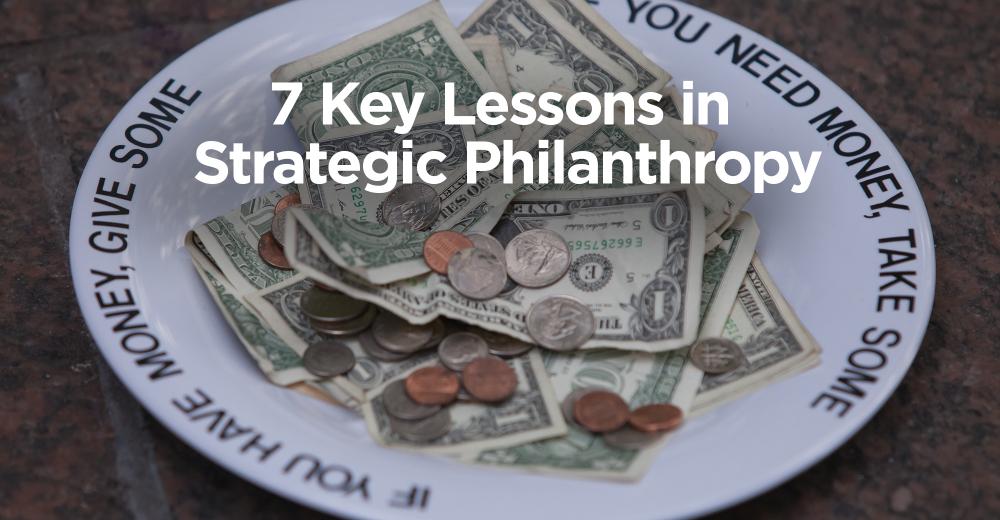1 8
1 8
There’s no better time to give than right now. Many people wait until their later years (or even until death) to start giving. Meanwhile, philanthropy could have been playing a meaningful role in their lives. Plus, the pressing issues for which philanthropy offers solutions can’t wait. Dr. Martin Luther King Jr. said: “Over the bleached bones and jumbled residue of numerous civilizations are written the pathetic words: ‘Too late.’”
Despite common fears, people rarely donate so much to charity that they can no longer provide for themselves or their loved ones. Many people can afford to give boldly today.
Philanthropy is a form of “risk capital” that drives innovation. Governments and private investors often avoid risk—even though solutions to humanity’s most intractable challenges require risk and innovation. Philanthropy, dedicated to social rather than financial returns, may well be the final stronghold for true risk-taking.
When setting philanthropic goals, donors of all types and sizes should look through two lenses. The external lens asks, “What are we hoping to accomplish for our community, country or world?” The internal lens asks, “What am I hoping to achieve for my family, business or self by donating hard-earned money and precious time to charity?”
Both lenses are important. Donors who use both can “make a difference” while at the same time fully engaging family members or business stakeholders in meaningful communication about important values, priorities and goals.
Familes need to dedicate a “table” to the discussion of philanthropy and invite all members to sit there as equals. This “safe zone” for effective communication can lead to more engagement, enhanced family dynamics and greater impact.
Because of unique life experiences, the perspective of rising generations often differs from that of the wealth-creating generations. Each can learn much from the other.
Too many donors adopt the “peanut butter” approach to giving—spreading charity thinly across a wide variety of causes and nonprofits. Donors and beneficiaries alike benefit when they focus deeply on a few carefully selected causes. Use the U.N.’s Sustainable Development Goals as a road map for lasting and vital impact.
Large “household name” nonprofits do great work; they’re often well-funded and deeply endowed. Because small “grass roots” organizations often struggle for resources, your gift to them can make a huge difference.
Major universities and colleges, for example, collectively have hundreds of billions of dollars in endowments. In contrast, many state and community colleges and technical schools struggle.
Funding higher education for people who aren’t at the top of academic or economic pyramids can dramatically change their lives—effectively addressing long-term issues like poverty, economic inequality, hunger and housing. For more on this topic, see “Higher education philanthropy, more like soccer or basketball?”
To meaningfully repair the world, deploy capital holistically. Support political candidates who share your view of society’s problems and solutions, engage in impact investing where your investments produce a double bottom line of profit and positive social impact and make grants that are strategic. Use all of the tools on your capital workbench.
Rather than taking a “we’re here to solve your problems” approach, consider philanthropy as a partnership—a collaboration among communities of people with different assets, characteristics, needs and strengths. Such communities often view their circumstances very differently than donors. Usually, they have great insights into strategies and solutions. A partnership approach diminishes power dynamics and enhances outcomes.
Philanthropy is a powerful tool to repair the world, while also helping donors find more purpose in their lives and businesses. It’s inherently optimistic, reflecting the deeply held belief that we can have a positive impact on stubborn societal issues and the lives of others. Through philanthropy, individuals and organizations can make a difference, promote change and improve their communities.

